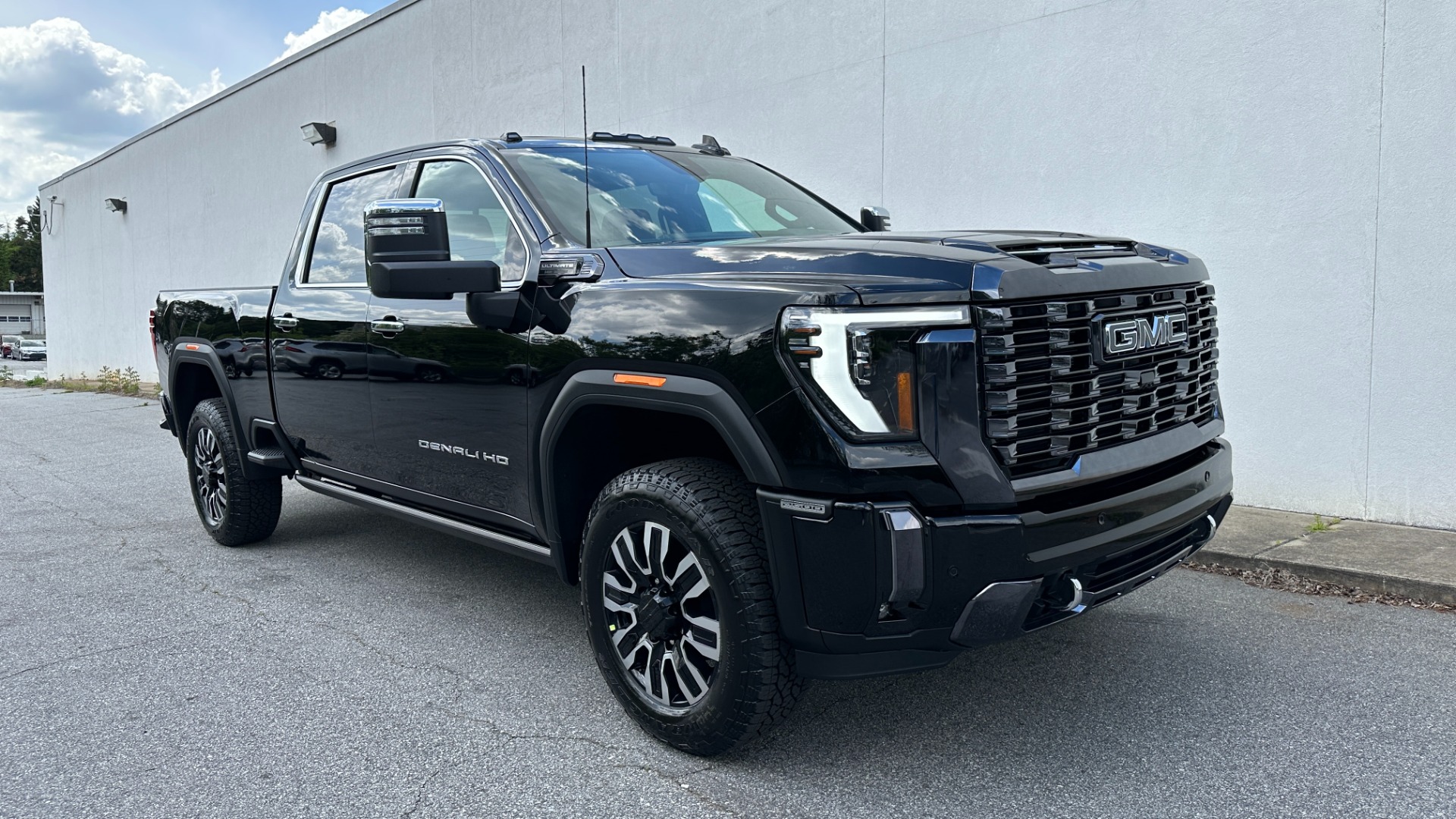90s Dodge Trucks For Sale: Your Comprehensive Buyer’s Guide cars.truckstrend.com
The 1990s was a transformative decade for the American pickup truck, and at the forefront of this revolution was the second-generation Dodge Ram. Launched in 1994, this bold, "big rig" styled truck didn’t just break the mold; it shattered it, forever changing how trucks looked and performed. Today, nearly three decades later, these 90s Dodge Rams remain highly sought after, representing a unique blend of rugged capability, iconic design, and surprising affordability.
Whether you’re a seasoned enthusiast, a first-time truck buyer, or someone looking for a reliable workhorse with character, the allure of 90s Dodge trucks for sale is undeniable. This comprehensive guide will delve into everything you need to know about finding, evaluating, and owning one of these legendary vehicles.
90s Dodge Trucks For Sale: Your Comprehensive Buyer’s Guide
The Enduring Appeal of the 90s Dodge Ram
Why do these trucks continue to command attention in the used vehicle market? Several factors contribute to their lasting popularity:
- Bold, Iconic Design: The revolutionary "big rig" styling of the 1994-2002 Ram was a dramatic departure from its predecessors and competitors. Its massive grille, prominent fenders, and muscular stance gave it an undeniable road presence that still turns heads today. This design was so impactful that it influenced truck styling across the industry for years to come.
- Powerhouse Engine Options: The 90s Ram offered a formidable lineup of engines, catering to diverse needs:
- Magnum V6/V8s (3.9L V6, 5.2L V8, 5.9L V8): These gasoline engines provided ample power for most users, known for their robust nature and decent performance.
- 8.0L V10 Magnum: A beast derived from the Viper engine, offering immense towing and hauling capabilities for those who needed serious grunt.
- Cummins 5.9L Turbo Diesel: The undisputed king. Available in both 12-valve (up to mid-1998) and 24-valve (mid-1998 onwards) configurations, the Cummins B-series engine is legendary for its incredible durability, immense torque, fuel efficiency (for a truck of its size), and tunability. A 90s Ram with a Cummins engine is often the holy grail for many buyers.

- Durability and Longevity: These trucks were built tough. With proper maintenance, it’s not uncommon to find 90s Rams with hundreds of thousands of miles still reliably serving their owners. Their straightforward mechanical design often makes them easier and more affordable to repair than modern, more complex vehicles.
- Affordability and Value: Compared to newer trucks, or even later generation Rams, the 90s models offer exceptional value for money. They provide significant utility, a unique aesthetic, and a potentially rewarding ownership experience without breaking the bank.
- Strong Aftermarket Support: Due to their popularity, a vast aftermarket exists for these trucks, offering everything from performance upgrades for the Cummins engine to interior restoration parts and suspension components. This makes customization and maintenance much easier.

Understanding the Different Flavors: Types and Configurations
When searching for 90s Dodge trucks for sale, you’ll encounter a variety of configurations. Understanding these will help you narrow down your search:
- Model Years (1994-1999): While the second generation technically ran until 2002, the 90s models primarily cover 1994-1999. Minor aesthetic and mechanical updates occurred throughout the decade, with the most significant being the transition from the 12-valve to the 24-valve Cummins in mid-1998 and the introduction of the Quad Cab.
- Cab Styles:
- Regular Cab: The standard two-door configuration, often preferred for work or if maximum bed length is desired.
- Club Cab: An extended cab with small jump seats in the rear. Early Club Cabs had two doors, while later models (from 1998) introduced rear-hinged "suicide" doors for easier access.
- Quad Cab (introduced 1998): The first true four-door configuration for the Ram, offering much better rear passenger access and comfort.
- Bed Lengths: Typically available in short bed (around 6.5 feet) and long bed (around 8 feet) options.
- Drivetrain: You’ll find both 2-wheel drive (2WD) and 4-wheel drive (4WD) models. 4WD models are generally more complex and can have more potential issues but offer superior off-road capability and traction in adverse weather.
- Trim Levels:
- ST (Standard): The base model, often with minimal features, manual windows, and vinyl interiors.
- SLT (Sport/Laramie): Mid-range, offering more creature comforts like power windows/locks, air conditioning, and cloth interiors.
- Laramie SLT: The top-tier trim, boasting premium interiors, chrome accents, and more standard features.

Navigating the Market: Where to Find Your 90s Dodge Truck
The market for 90s Dodge trucks for sale is vibrant, but finding the right one requires patience and knowing where to look:
- Online Marketplaces: Websites like Craigslist, Facebook Marketplace, eBay Motors, AutoTrader, and dedicated truck sales sites are excellent starting points. Use specific keywords like "199X Dodge Ram," "12-valve Cummins," or "24-valve Cummins."
- Dedicated Forums and Enthusiast Groups: Online forums (e.g., Dodge Ram Forum, Cummins Forum) and Facebook groups for 2nd Gen Ram owners often have "for sale" sections. These communities can also offer valuable insights and advice.
- Local Dealerships: Less common for older models, but some independent used car dealerships might have them, especially if they specialize in trucks.
- Auctions: Vehicle auctions, particularly those specializing in older or classic vehicles, can sometimes yield gems. Be cautious, as "as-is" sales offer little recourse if issues arise.
- Word-of-Mouth: Let friends, family, and mechanics know you’re looking. Sometimes the best deals are found through personal connections.
The Smart Buyer’s Guide: What to Look For
Purchasing a vehicle that’s 20-30 years old requires a meticulous inspection. A pre-purchase inspection (PPI) by a trusted mechanic, especially one familiar with these trucks, is highly recommended.
- Rust: The Silent Killer: This is often the biggest enemy of older trucks. Check thoroughly:
- Fenders and Rocker Panels: Common areas for rust.
- Cab Corners and Door Bottoms: Water collects here.
- Bed: Especially under the bed liner if present, and the wheel wells.
- Frame: Inspect the frame rails for any significant rust, cracks, or previous repairs. Surface rust is common and manageable; structural rust is a deal-breaker.
- Engine Health:
- Gas Engines (Magnum V6/V8, V10): Look for oil leaks, listen for strange noises (knocks, ticks), check for misfires, and ensure the check engine light isn’t illuminated. Check coolant for contamination.
- Cummins Diesel:
- Blow-by: Remove the oil fill cap while the engine is running. Excessive smoke/pressure indicates worn piston rings. A small amount of vapor is normal.
- Fuel Leaks: Check the injection pump (P7100 on 12-valve, VP44 on 24-valve) and fuel lines for leaks.
- "Killer Dowel Pin" (KDP) (12-valve only): This small pin can back out and cause catastrophic engine damage. Ask if the KDP has been "fixed" or "tabbed." If not, factor in the cost of this preventative maintenance.
- Start-up: Listen for smooth starting, minimal smoke (a puff of black/white on cold start is normal, but not excessive).
- Transmission:
- Automatic (46RE, 47RE, 48RE): These transmissions, especially when paired with a Cummins, are known to be a weak point, particularly if the engine has been modified. Check for smooth, consistent shifts. Any slipping, delayed engagement, or harsh shifts indicate problems. Check fluid condition (should be red/pink, not dark or burnt-smelling).
- Manual (NV4500, NV5600): Check for grinding gears, excessive shifter play, and a smooth clutch engagement.
- Drivetrain (4×4 Models): Engage 4WD (high and low) to ensure it works properly. Listen for clunks or grinding from the transfer case or differentials. Check U-joints for play.
- Suspension and Steering: These trucks are prone to front-end wear. Check for excessive steering play (a common issue with the steering box), worn ball joints, tie rod ends, and track bar. Uneven tire wear can be a symptom.
- Interior:
- Dash Cracks: This is almost universal for 90s Rams. While not mechanical, it’s a visual defect. Aftermarket dash caps or full replacements are available.
- Seat Wear: Especially on the driver’s side.
- HVAC: Test AC and heat thoroughly.
- Electrical: Test all lights, power windows, locks, radio, and gauges.
- Documentation: Ask for service records, maintenance history, and receipts for any major repairs or upgrades. This provides valuable insight into the truck’s past.
Common Challenges and Solutions
Owning a 90s Dodge Ram comes with a few well-known quirks, but most have established solutions:
- Cracked Dashboards: As mentioned, nearly every 90s Ram will have a cracked dash. Solutions range from inexpensive dash covers to more involved full dash pad replacements.
- Automatic Transmission Weaknesses: For those with a Cummins, especially if tuned, the factory automatic transmissions can struggle. Solutions include heavy-duty rebuilds with upgraded components (valve body, torque converter, clutch packs) or even manual transmission conversions.
- Front End Wear: The steering system and front suspension components are prone to wear. Upgraded aftermarket steering boxes, stronger tie rod ends, and adjustable track bars are popular solutions to improve steering feel and durability.
- Rust: While challenging, rust repair panels are available for common areas like cab corners and rocker panels. For minor surface rust, proper treatment and coating can prevent further spread.
- Electrical Gremlins: Older vehicles can develop minor electrical issues. A good understanding of wiring diagrams and patience often solves these.
Maintenance and Ownership: Keeping Your Ram Running Strong
Proper maintenance is key to the longevity of any vehicle, especially an older truck.
- Regular Fluid Changes: Engine oil, transmission fluid, differential fluid, transfer case fluid (if 4WD), and coolant.
- Fuel Filter Replacement: Crucial for diesel engines to protect the injection system.
- Grease Zerk Fittings: Regularly grease all suspension and steering components that have zerks.
- Tire Rotation and Alignment: Essential for even tire wear and proper handling.
- Address Issues Promptly: Don’t let small problems become big, expensive ones.
- Parts Availability: Thanks to their popularity, most wear-and-tear parts and many specialty components are readily available through auto parts stores, online retailers, and aftermarket suppliers.
Estimated Price Guide for 90s Dodge Trucks For Sale
The price of a 90s Dodge Ram can vary dramatically based on its condition, mileage, engine, cab configuration, and geographical location. This table provides a general estimate.
| Model Year Range | Engine Type | Condition (Poor/Fair) | Condition (Good) | Condition (Excellent/Restored) |
|---|---|---|---|---|
| 1994-1999 | 3.9L V6 / 5.2L V8 Magnum | $2,000 – $5,000 | $5,000 – $9,000 | $9,000 – $15,000+ |
| 1994-1999 | 5.9L V8 Magnum | $2,500 – $6,000 | $6,000 – $10,000 | $10,000 – $18,000+ |
| 1994-1999 | 8.0L V10 Magnum | $3,000 – $7,000 | $7,000 – $12,000 | $12,000 – $20,000+ |
| 1994-1998.5 | 5.9L 12-Valve Cummins | $7,000 – $15,000 | $15,000 – $25,000 | $25,000 – $40,000+ |
| 1998.5-1999 | 5.9L 24-Valve Cummins | $6,000 – $13,000 | $13,000 – $22,000 | $22,000 – $35,000+ |
Disclaimer: These are estimates only. Trucks with very low mileage, rare configurations, extensive modifications, or professional restorations can command significantly higher prices. Conversely, trucks needing major mechanical work or extensive body repairs will be at the lower end or even below these ranges.
Frequently Asked Questions (FAQ)
Q: What’s the best engine for a 90s Dodge Ram?
A: For durability, torque, fuel efficiency, and a robust aftermarket, the 5.9L Cummins turbo diesel (both 12-valve and 24-valve) is generally considered the best and most sought-after. For gasoline, the 5.9L V8 Magnum offers a good balance of power and reliability.
Q: Are parts still available for these trucks?
A: Yes, very much so. Due to their widespread popularity and the sheer number produced, most mechanical, body, and interior parts are readily available from aftermarket suppliers, online retailers, and even Dodge dealerships.
Q: What is the "Killer Dowel Pin" (KDP) and why should I care?
A: The KDP is a small steel pin in the timing case of 1989-1998.5 12-valve Cummins engines. It can work its way loose and fall into the timing gears, causing catastrophic engine damage. It’s a highly recommended preventative fix for any 12-valve owner or prospective buyer.
Q: Are the automatic transmissions reliable in these trucks?
A: The automatic transmissions (46RE, 47RE) in these trucks, especially when paired with the high torque of the Cummins engine, are often considered a weak point. They can fail prematurely if not properly maintained or if the engine is modified for more power. However, they are highly rebuildable with aftermarket upgrades that significantly improve their durability.
Q: Can a 90s Dodge Ram be a daily driver?
A: Absolutely. With proper maintenance and addressing common issues, many 90s Rams serve reliably as daily drivers. Their relatively simple mechanics can make them less expensive to maintain than newer, more complex trucks.
Q: What’s the typical fuel economy?
A: Fuel economy varies greatly. Gasoline V8s typically get 10-15 MPG. The V10 will be lower, often in the single digits. Cummins diesel models generally offer the best fuel economy, often in the 15-20+ MPG range, depending on configuration, driving style, and modifications.
Conclusion
The 90s Dodge Ram is more than just a used truck; it’s a piece of automotive history, an iconic design, and a testament to rugged American engineering. With their bold styling, powerful engine options (especially the legendary Cummins diesel), and surprising affordability, they continue to be a compelling choice for a wide range of buyers.
While buying an older vehicle always comes with its caveats, armed with the right knowledge and a thorough inspection, finding and owning a 90s Dodge Ram can be an incredibly rewarding experience. Whether you’re seeking a capable work truck, a reliable daily driver, or a platform for a custom build, these trucks offer a unique blend of character, capability, and value that’s hard to find in the modern market. Embrace the rumble of that Magnum V8 or the unmistakable clatter of a Cummins, and you’ll understand why these trucks continue to hold a special place in the hearts of enthusiasts everywhere.

